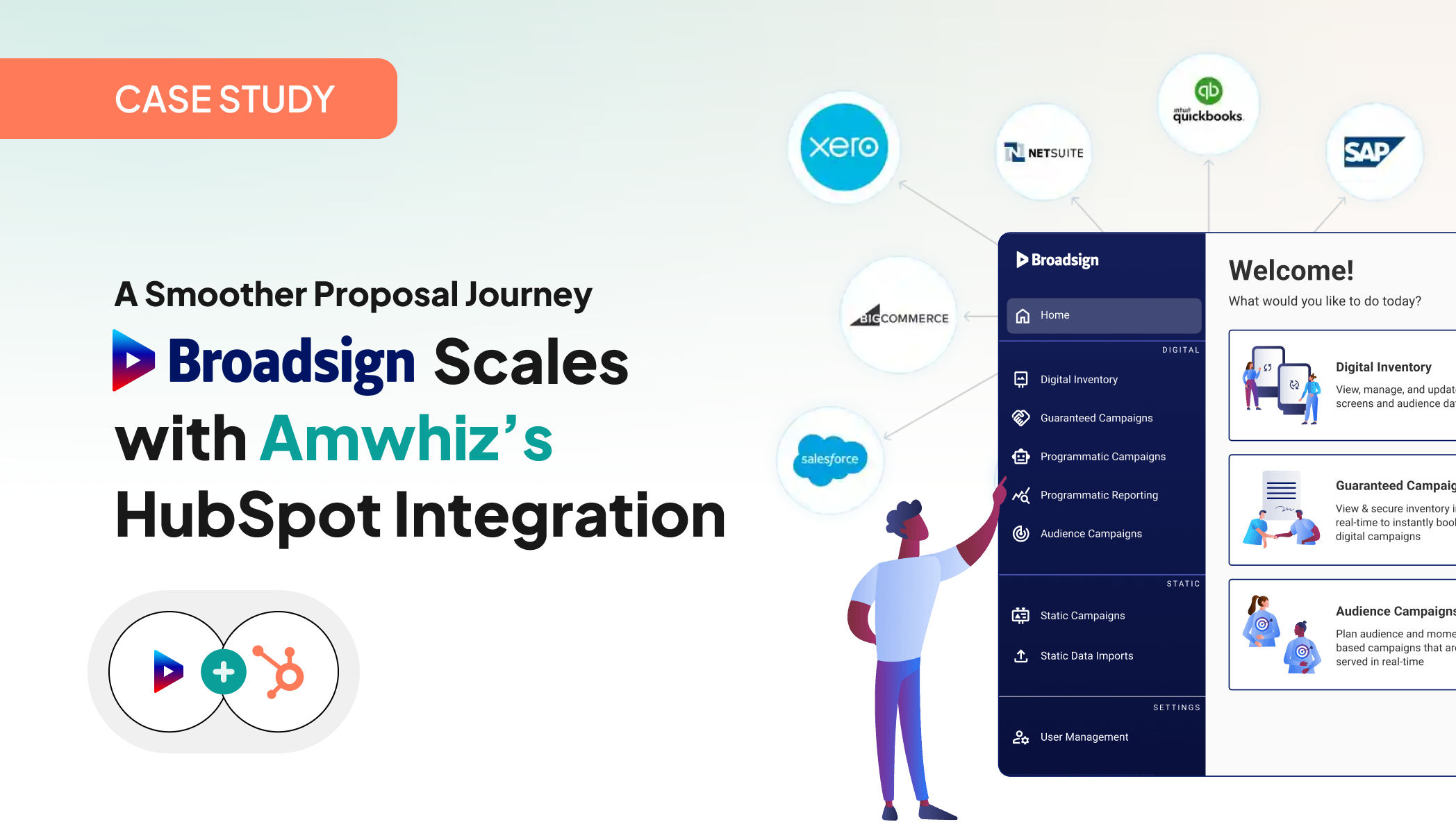written by: Renuka M
Overview
Broadsign is a global leader in digital-out-of-home (DOOH) advertising software, used by media owners and agencies worldwide to plan, sell, and deliver advertising campaigns. While Broadsign offers robust tools for managing proposals, the company faced a key operational limitation — there was no direct way to share or sync proposal data with clients who primarily used HubSpot. This gap created workflow inefficiencies, manual effort, and data inconsistencies across systems. To address it, Broadsign partnered with Amwhiz, an expert in system integration and automation.
The Challenge
Broadsign’s internal proposal system managed both Direct and Static proposals. However, these proposals couldn’t automatically sync with HubSpot Deals, where most client interactions and tracking occurred. This disconnect led to several major challenges:
- No native webhook support: Broadsign lacked built-in webhooks, making real-time data sync to HubSpot more complex.
- Manual sync process: Without automatic triggers, the team needed a semi-automated way to push updates.
- Complex line item structures: Each proposal contained multiple detailed line items that needed to be mapped accurately into HubSpot’s deal records.
- Risk of data inconsistency: Manual updates introduced errors and made it difficult to ensure data accuracy between platforms.
The Amwhiz Solution
Amwhiz designed and developed a custom integration that connected Broadsign’s proposal data with HubSpot’s CRM, even without native webhook support. The solution focused on flexibility, reliability, and data accuracy.
1. Custom Sync Trigger in HubSpot
A new “Sync” checkbox property was created in HubSpot Deals. When checked, it serves as a trigger to initiate the synchronization process.
2. Intelligent Data Retrieval
Once triggered, the system fetches the relevant proposal data — including both Broadsign Direct and Broadsign Static proposals — through internal APIs and available integration endpoints.
3. Accurate Deal Mapping
The integration identifies the correct HubSpot Deal by using unique identifiers and mapping logic to ensure that data always syncs to the right deal.
4. Automated Line Item Updates
Proposal line items are automatically updated or added within the associated HubSpot Deal, ensuring that pricing, quantities, and details are always aligned with the latest version in Broadsign.
5. Sync Reset Mechanism
After the sync is completed, the checkbox resets to avoid duplicate updates and maintain process integrity.
Results & Impact
The custom integration delivered significant operational and business benefits for Broadsign:
Unified Client View
All proposal data from Broadsign Direct and Static is now visible within HubSpot Deals, giving teams and clients a single, centralised source of truth.
Increased Operational Efficiency
Manual data entry and duplicate work were eliminated, allowing sales and support teams to focus on relationship management rather than administrative updates.
Reduced Human Error
Automated synchronisation minimised the risk of inconsistencies or outdated information between Broadsign and HubSpot.
Future-Ready Architecture
Although Broadsign doesn’t yet provide webhook capabilities, the integration was designed with scalability in mind — ready to evolve into a fully automated sync when new API features become available.
Conclusion
Through a smart and flexible integration approach, Amwhiz helped Broadsign overcome a key platform limitation and unlock new levels of efficiency.
Today, Broadsign’s teams and clients enjoy real-time visibility, accurate data, and a unified experience within HubSpot. This project showcases how the right integration strategy can transform disconnected systems into a cohesive, automated workflow.
-1.png?width=134&height=66&name=amwhiz-logo%20(1)-1.png)



